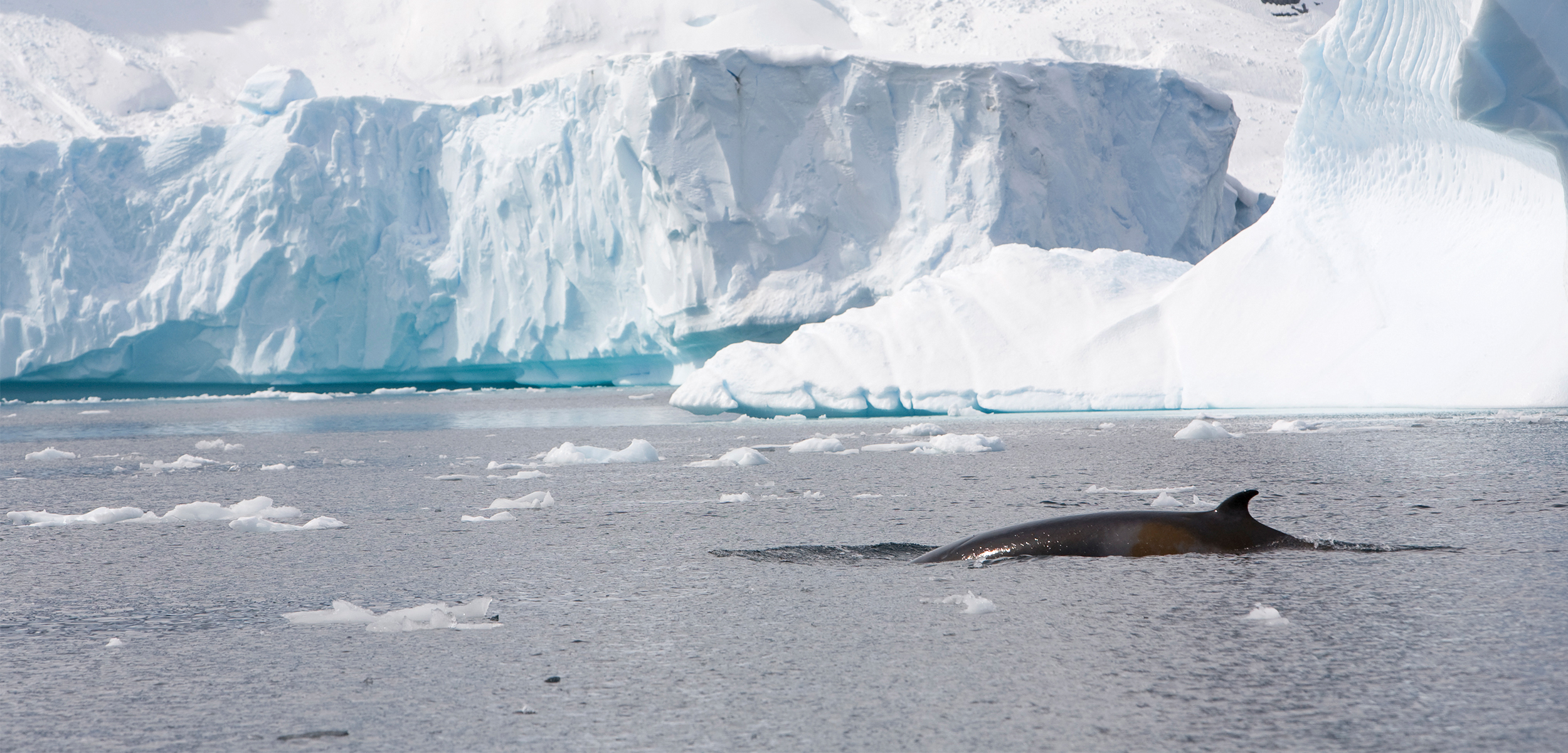Learn to Grunt and Growl like an Antarctic Minke Whale
For the first time, scientists have identified the calls of this elusive Southern Ocean resident.
Article body copy
Scientists didn’t know Antarctic minke whales existed until the 1990s. Before then, these elusive whales, which lurk beneath the cold sea ice and gulp down krill in the Southern Ocean, were often confused with their far more familiar cousin, the common minke whale. Although scientists know very little about the species, a new study led by Ari Friedlaender, a marine mammal ecologist at the University of California, Santa Cruz, has offered an unprecedented look at one of the whale’s most fundamental features: its calls.
By strapping tags with video cameras and hydrophones to 16 Antarctic minke whales for about two days, Friedlaender and his colleagues identified four calls that these whales produce—and the context in which they make them. The findings offer a peek at what it’s like to be an Antarctic minke whale.
In their recordings, the scientists identified four key Antarctic minke whale calls. Three of these, which they’ve called the rumble, growl, and boom, have never been recorded before. Researchers first reported the fourth, called the downsweep, in the 1970s but mistakenly attributed it to the common minke whale.
Of the four minke whale sounds among the scientists’ recordings, the most common was the rumble—a very short call that lasts just over one-tenth of a second. It sounds like pulling up a zipper, or like a sharp grunt. The video footage shows the whales rumble mostly at night while searching for food.
Audio courtesy of Caroline Casey
The growl, by contrast, is a high-pitched roar that lasts about half a second. Antarctic minke whales make these calls mostly during the day when others of their kind are around. But the researchers can’t tell if the growl is meant to tell another whale off, if it’s just friendly whale banter, or if it’s something entirely different.
Audio courtesy of Caroline Casey
The boom, meanwhile, is a second-long guttural sound that the whales belt out in bouts. They make these calls at night, but never while foraging.
Audio courtesy of Caroline Casey
The previously misidentified, eardrum-punching downsweep is a low-frequency call the Antarctic minke whale makes when not looking for food and when no other individuals are in sight. Like most baleen whales, Antarctic minke whales forage in groups and use sounds to communicate with each other. The researchers think the downsweep and boom could be contact calls—the whale equivalent of saying “I’m here.”
Audio courtesy of Caroline Casey
Denise Risch, a bioacoustician at the Scottish Association for Marine Science who was not involved in the study, says the findings help scientists better understand the behaviors of Antarctic minke whales.
With the newly identified whale calls and the video context around them, the research opens up a new avenue to learn even more.
Now that they know what they’re looking for, scientists can go back in time through more than seven decades of hydrophone data collected in the Southern Ocean to analyze the symphony of sounds they contain. By isolating all the Antarctic minke whale calls, they can gauge the abundance of these whales in the region, monitor how their population has fared over time, and identify any changes to their call patterns and accompanying context in response to the changing ocean soundscape.

